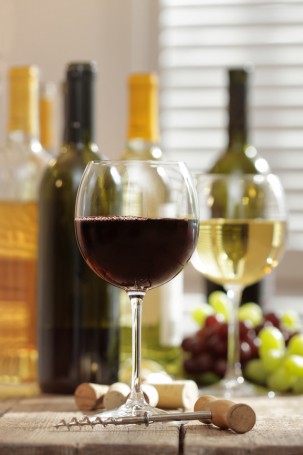Deciphering a wine list can be very intimidating for social and casual drinkers. On any list, there is a lot of unfamiliar terminology and big, unpronounceable words that get tangled in your tongue and never come out the way they do when someone else says them.
While yes, wine is a complex beverage with a lot of history and variety, many of the terms used to describe wine are quite basic. Just do as I say, not as I do, and don’t overthink it.
Appearance: refers to a wine’s clarity, not color. Can you see through the glass? Is it cloudy? Describe the wine based on how clear it is – or isn’t.
Aroma: is the smell of a wine. Here’s a fun fact: if a scent is not stored in your sense memory, you won’t be likely to pick up on it. If you’ve never smelled strawberries, you won’t likely detect them in your beautiful Pinot Noir. To better appreciate the aroma of wines, give your olfactory senses a workout and take in the aroma of spices, fruits – and even freshly mowed grass.
Blend: is not always a verb when it comes to wine. A blend is a mix of two distinct wines, which can be two different grapes or the same grapes from two different vineyards. You’ll also find wines that are blended with a combination of more than two different wines.
Body: refers to the weight of the wine in your mouth. How heavy does it feel? Is it light and refreshing or is it thick and comforting? Here’s a trick: compare it to milk. Skim milk is the equivalent of a “light-bodied” wine while whole milk has a full body.
Dry: simply means that a wine is not sweet.
Finish: is the impression that wine leaves in your mouth as you swallow it. If your lips pucker, maybe this particular wine was too tart for your liking.
Tannins: are, contrary to popular belief, NOT an indicator of how much alcohol is in your wine. Tannins come from the skins, stems and seeds of the grapes and give wine its color. Why is red wine red? Because the grape skins are left in the mix, while white wines tend to have them removed. Tanins are the dry sensation that occur in your throat after finishing a glass (or a long sip) of red wine.













5 Comments
Susan H
January 29, 2011 at 7:08 pmGreat article – did you know that most diners do not want to appear “cheap” and order the least expensive bottle of wine on the list, so they order the next least expensive. Some restaurants price their wines accordingly and make their second to the last wine gain them the most profit.
Kate
January 20, 2011 at 12:49 pmOooohhh I’ve been looking forward to this post! I love your Wine Wednesdays! Don’t forget my favorite wine term- legs! I love commenting to the hubs that a wine has nice legs.
Roz
January 20, 2011 at 12:47 amThis is a great post. Clarified quite a few terms for me. Thanks.
Shaina
January 20, 2011 at 12:51 amLove this post! Congratulations on the job, as well.
Brittany
January 19, 2011 at 11:20 pmI have always wondered what dry meant! That is good to know since I prefer sweet wines. Thanks!